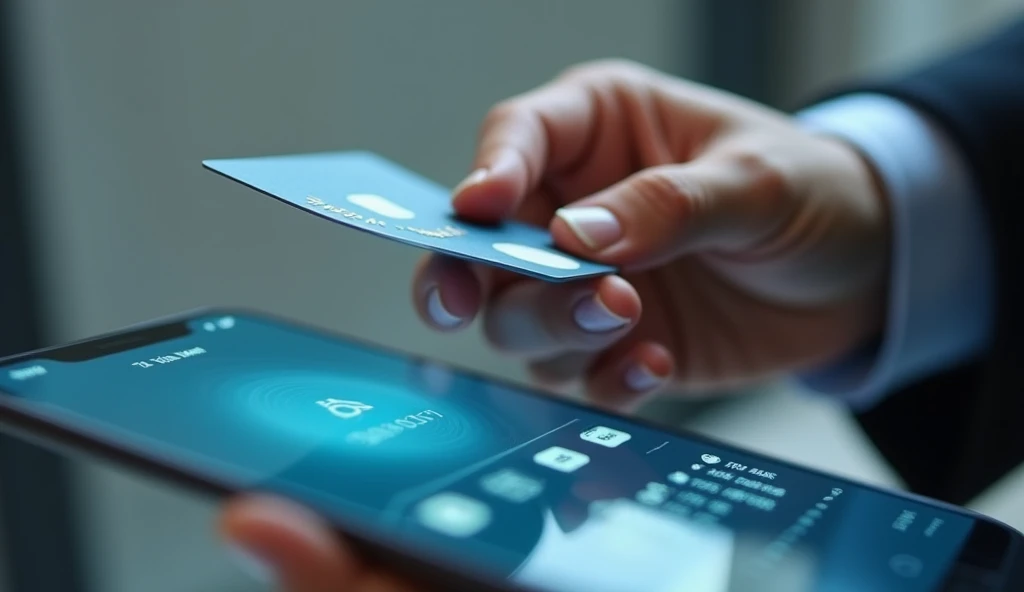Introduction to Mobile Payments
Mobile payments refer to the transaction processes carried out using mobile devices, such as smartphones and tablets. This innovative payment method enables users to conduct transactions without the need for physical currency or traditional banking practices. The evolution of mobile payment technology can be traced back to the late 1990s when SMS-based payments began to gain traction. However, it was the advent of smartphones and secure mobile applications that significantly accelerated the adoption of mobile payment systems.
At present, various forms of mobile payments have emerged, including digital wallets, contactless payments, and in-app purchases. Digital wallets, such as Apple Pay, Google Pay, and Samsung Pay, allow users to store their payment information securely and make purchases either online or in person. Contactless payments utilize Near Field Communication (NFC) technology, enabling users to pay for goods and services by simply tapping their phones against a compatible point-of-sale terminal.
This method has gained popularity due to its speed and convenience, appealing to consumers who prefer seamless transaction experiences. Furthermore, in-app purchases have become a staple in e-commerce, allowing customers to buy products or services directly within mobile applications, further enhancing the user experience.
As society becomes increasingly digital, the trend of consumers opting for mobile solutions over traditional payment methods continues to rise. This shift can be attributed to the convenience, speed, and security offered by mobile payment systems. With rapid technological advancements, mobile payment adoption rates are expected to further escalate, propelling the way individuals and businesses conduct transactions. The integration of biometric security features, such as fingerprint scanning and facial recognition, further assures users of the safety of their financial information, fostering confidence in mobile payment ecosystems.

Security Features of Mobile Payment Systems
The adoption of mobile payment systems has been accompanied by an increased focus on security features designed to protect user data and ensure secure transactions. Central to these systems is the use of tokenization, which replaces sensitive financial information with unique identification symbols. This means that instead of transmitting actual card numbers during transactions, only tokens are sent, reducing the risk of data breaches. Tokenization adds a critical layer of security, making it difficult for cybercriminals to exploit sensitive information.
Another essential technology used in mobile payment systems is encryption. This process involves transforming data into a secure format that can only be read by the intended recipient. Modern mobile payment platforms employ robust encryption protocols, safeguarding transaction details and personal information from unauthorized access during transmission. By encrypting sensitive data, these systems provide a secure tunnel through which financial transactions occur, assuring users that their information is safe.
Biometric authentication represents a significant advancement in securing mobile payments. Techniques such as fingerprint scanning, facial recognition, and voice recognition are becoming increasingly popular, providing users with a convenient yet secure way to authorize transactions. This multi-factor authentication process adds another layer of protection, significantly reducing the risk of unauthorized access to mobile payment applications.
Despite these advanced security features, consumers often harbor concerns about the safety of mobile transactions compared to traditional credit and debit card payments. Studies indicate that mobile payment systems are, in fact, statistically safer due to their use of cutting-edge technologies. According to a survey conducted by a leading financial institution, 75% of users reported feeling secure using mobile payments, citing the advanced security measures as their primary assurance.
These findings indicate that while concerns regarding security persist, mobile payment systems have made significant strides in enhancing consumer protection, making them a competitive alternative to more traditional payment methods.
Benefits of Using Mobile Payments
The advent of mobile payments has significantly transformed the way transactions are conducted, benefitting both consumers and businesses alike. For consumers, one of the most significant advantages is convenience. Mobile payment solutions enable users to make purchases and send money with just a few taps on their smartphones, eliminating the need to carry cash or credit cards. This ease of access streamlines the checkout process, saving valuable time in busy settings such as retail environments or during online shopping.
Speed is another critical advantage of mobile payments. Transactions are processed almost instantaneously, which is beneficial during peak times or when quick transactions are necessary. According to a study, customers using mobile wallets spend 30% more per purchase than those using traditional payment methods, indicating that mobile payments can enhance overall spending efficiency. Moreover, mobile payment applications often integrate expense tracking tools. For consumers, this means greater visibility over their spending habits, which can aid in budgeting and financial planning. Users can review their transaction history easily, leading to informed spending decisions and effective management of personal finances.
Businesses also stand to gain considerably from adopting mobile payment solutions. The integration of this technology can lead to increased customer satisfaction, as quicker transaction times improve the overall shopping experience. Additionally, businesses that successfully implement these systems can reach a younger, more tech-savvy demographic. Millennials and Generation Z are more likely to embrace mobile payments, presenting an untapped opportunity for many merchants.
Several businesses have reported success after adopting mobile payment platforms. For example, a local coffee shop noted a 20% rise in sales after implementing options like contactless payment and mobile apps, showcasing the direct impact of mobile payments on revenue generation. As mobile payment technology continues to evolve, both consumers and businesses will likely experience further benefits.

Future Trends in Mobile Payments
The landscape of mobile payments is constantly evolving, and several emerging trends and technologies are poised to significantly influence this industry. One notable trend is the growing integration of cryptocurrency into mobile payment solutions. As digital currencies gain wider acceptance, businesses and consumers alike are exploring their potential for facilitating secure, instantaneous transactions. Cryptocurrency wallets and apps are becoming increasingly user-friendly, allowing for seamless payment experiences alongside conventional methods. Additionally, the development of decentralized finance (DeFi) platforms may introduce further innovation in how both individuals and businesses manage their financial transactions.
Another transformative factor is the advancement of artificial intelligence (AI) and machine learning in transaction processing. These technologies enable enhanced security features, such as real-time fraud detection and risk assessment. AI-driven analytics can also optimize mobile payment experiences by offering personalized recommendations based on user behavior, thereby improving customer engagement and loyalty. As these tools develop, businesses will be better equipped to anticipate and meet consumer needs, creating a more tailored payment experience.
The Internet of Things (IoT) presents yet another exciting avenue for the future of mobile payments. With the proliferation of connected devices, from smartwatches to IoT-enabled appliances, consumers increasingly expect convenient payment methods that fit seamlessly into their daily lives. Companies are already exploring ways to leverage IoT technology to facilitate contactless transactions, allowing users to complete payments through their devices without the need for traditional payment terminals. This trend not only underscores consumers’ demand for speed and efficiency but also points toward a more interconnected and automated financial ecosystem.
As mobile payments continue to proliferate, consumer expectations will also evolve alongside global economic changes. Businesses must stay ahead of these trends to provide innovative payment solutions that cater to a diverse and dynamic marketplace. Ultimately, the future of mobile payments promises to be characterized by greater convenience, enhanced security, and a more personalized experience for users.
Conclusion
In conclusion, the rise of mobile payments has fundamentally transformed the way individuals and businesses conduct transactions, offering unmatched convenience, speed, and security. With digital wallets, contactless payments, and in-app purchases becoming mainstream, mobile payment systems have streamlined the shopping experience for consumers and boosted efficiency for businesses. Enhanced security features like tokenization, encryption, and biometric authentication have helped alleviate concerns surrounding mobile transactions, contributing to growing user confidence.
Looking ahead, the integration of emerging technologies like cryptocurrency, artificial intelligence, and the Internet of Things (IoT) will further revolutionize the mobile payments landscape. These advancements promise even faster, more secure, and personalized payment experiences, shaping the future of how transactions are managed globally. As adoption rates continue to rise, businesses that embrace these innovations will be well-positioned to thrive in an increasingly digital economy.
FAQ: Mobile Payments
What are mobile payments?
Mobile payments refer to transactions made using mobile devices like smartphones or tablets. These payments can be made through digital wallets, in-app purchases, or contactless payment systems without needing cash or cards.
How do mobile payments work?
Mobile payments use technologies like Near Field Communication (NFC), tokenization, and encryption to enable secure transactions. Users store payment information in a mobile wallet or app and can make purchases by tapping their device on a payment terminal or processing payments online.
Are mobile payments secure?
Yes, mobile payments are secure due to technologies such as tokenization, which replaces sensitive data with a unique code, and encryption, which protects transaction data. Many systems also use biometric authentication, like fingerprints or facial recognition, for added security.
What are the benefits of using mobile payments?
Mobile payments offer convenience, speed, and security. Users can quickly complete transactions without needing physical cash or cards, track their spending easily through apps, and benefit from faster checkout processes in-store and online.
Can I use mobile payments for online shopping?
Yes, mobile payments can be used for online shopping. Many retailers allow customers to make purchases through digital wallets like Apple Pay, Google Pay, or by saving payment information in apps for seamless transactions.
What are the future trends in mobile payments?
Future trends include the growing use of cryptocurrency in mobile payment apps, the integration of artificial intelligence (AI) for enhanced security and personalization, and the use of Internet of Things (IoT) devices for seamless, contactless payments across a wide range of devices.
More about mobile payments



